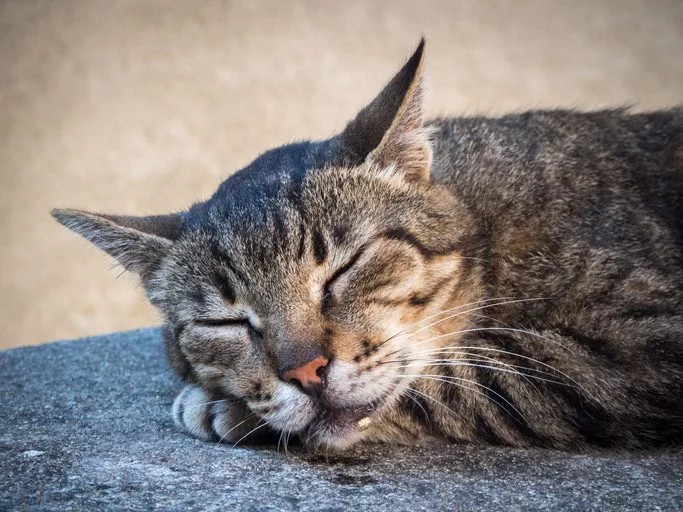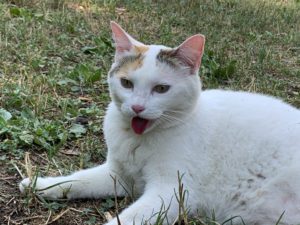Cat Drooling: What it is and Why They Do it
Cat drooling is a common phenomenon that can be caused by a variety of factors, from medical conditions to emotional states. In order to properly diagnose and treat the condition, it is important to understand what it is, why cats do it, and how to prevent it. In this article, we will discuss the definition of cat drooling, its causes, how to identify it, and how to treat it.
Cat drooling is a common behavior exhibited by cats and is usually caused by excitement or anticipation of something, such as a treat or meal. It can also be a sign of pain or illness, so it’s important to take your cat to the vet if it is drooling excessively.
Cat drool is a mysterious and fascinating phenomenon–it’s both endearing and perplexing. What could be causing this strange behavior?
Definition of When a Cat is Drooling
When a cat is drooling, it is a sign of excessive saliva production. It is usually caused by the cat being overly excited, feeling nauseous, or having an oral health issue. The saliva can be clear, white, or yellow and there may be saliva bubbles present. If a cat is drooling excessively, it is important to contact a veterinarian to look into the underlying cause.

Causes of Cat Drooling
Cat drooling can be caused by a variety of things, including excitement, contentment, nausea, dental problems, heat exhaustion, and diseases or infections. When cats are excited, they may drool in anticipation of something they are looking forward to, such as a treat or a petting session.
Cats may also drool when they are content, such as when they are being petted or when they are sleeping. Nausea can also cause cats to drool as a sign of discomfort. Dental problems, such as gum disease, can cause cats to have painful mouth ulcers or abscesses, leading to drooling.
Heat exhaustion is another common cause of drooling in cats, as their bodies become overheated and unable to regulate their temperature. Finally, certain diseases or infections can also cause cats to drool, such as rabies, feline leukemia, or distemper.
Medical Reasons
Various medical conditions can cause cats to drool, including:
- Ingestion of a toxic substance
- Infection
- Oral irritation
- Neurological disorders
- Dental problems
- Kidney or liver failure
- Heatstroke
- Allergic reactions
- Motion sickness
- Pain
If your cat is drooling and it is not due to eating something delicious, it is important to take them to the vet for a checkup and diagnosis to ensure your pet’s health and well-being.
Emotional Reasons
Emotional reasons cats drool include:
- Stress and/or fear: When cats are stressed or scared, they may drool as a result of their bodies releasing hormones.
- Overstimulation: When cats become overly excited, they may drool due to the release of endorphins.
- Pleasure: Cats may drool when they are petted, grooming themselves, or in response to a pleasant smell.
- Pain: Cats may drool if they are in pain or have an underlying medical issue, so it’s important to take them to the vet if you notice this behavior.
Other Reasons
Some other reasons cats may drool include:
- Oral health issues: Drooling can be a sign of dental or gum issues or the presence of a foreign body in the mouth.
- Food allergies: Cats may drool if they have a food allergy or sensitivity.
- Medication: Certain medications can cause cats to drool.

Prevention of Cat Drooling
To prevent cat drool, it is important to keep your cat’s mouth healthy. Regular brushing of your cat’s teeth with a pet-safe toothpaste is essential to reduce plaque buildup which can lead to drooling. You should also ensure your cat is eating a high quality, balanced diet. Keep your cat’s diet varied and interesting by adding supplements or treats.
Regular vet checkups are also recommended to make sure your cat’s health is up to date and any potential underlying issues can be addressed. Finally, keep your cat stress-free by providing plenty of toys and interactive playtime.
Identification and Signs of Unhealthy Cat Drooling
Cat drooling is usually a sign of something minor, such as being content or excited, however, excessive or constant drooling can indicate an underlying medical condition. Common signs of unhealthy drooling include excessive drooling accompanied by a refusal to eat, lethargy, depression, weight loss, mouth pain, and foaming at the mouth.
If you notice any of these signs, you should take your cat to the vet for a full physical exam. In addition to physical exams, your vet may also recommend blood tests and imaging to help identify any underlying medical conditions causing the drooling.
Amount, Texture, and Color
Cat drooling can vary in amount, texture, and color. Generally, the amount of drool produced by cats is minimal, but can increase when they are feeling content or relaxed. The texture of cat drool is usually thin and watery, but can become thicker and more viscous when cats are feeling ill or stressed. The color of cat drool can range from clear to yellow or green, depending on the cat’s diet and health. If the drool produces an unusual odor or if the color is darker than usual, it may be a sign of illness and it is best to see a veterinarian for a proper diagnosis.
Conclusion
Cat drooling is a very common behavior in cats. It is normal for cats to drool when they are relaxed and content, as a way of expressing happiness and contentment. It can also be a sign of various medical conditions, so it is important to take your cat to the vet if you notice it drooling excessively. If your cat drools when it is in a stressful situation, it could be a sign of fear or anxiety. Understanding why your cat is drooling and what could be causing it can help you provide the best care for your pet.
If you have any questions regarding your cat’s drooling, call our veterinarian at (303) 850-9393 or Make an Appointment online!
